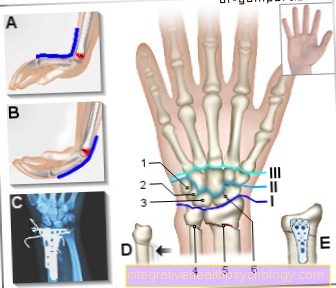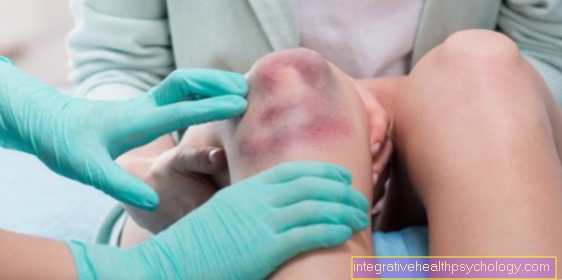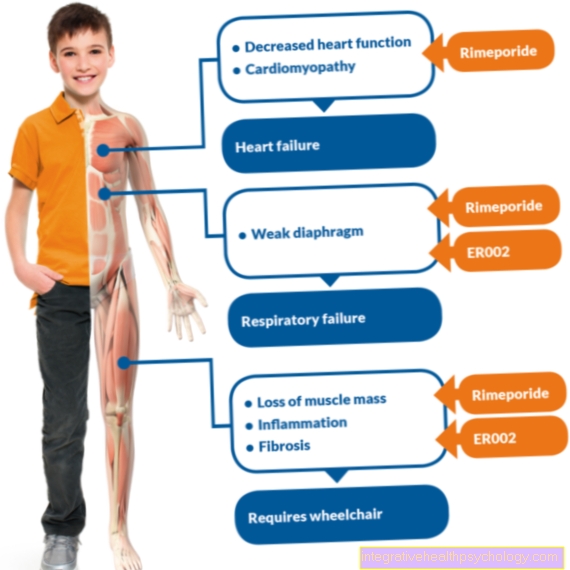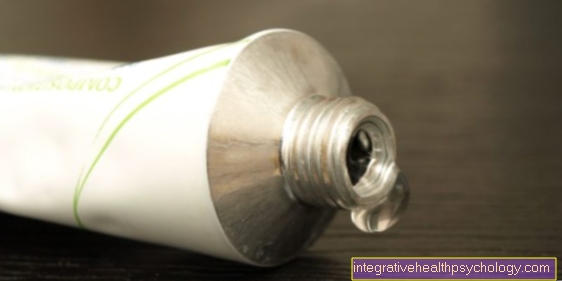When does my child start to walk?
definition
A child's first steps are a major milestone in child development and often a very fulfilling moment for parents. The transition from crawling on hands and legs to walking on two legs enables the child not only to move around faster, but also to explore and perceive their surroundings independently. It is the first important step in the development from baby to toddler. When children start running for the first time can vary greatly from child to child.
Read more on the topic: Development of the child
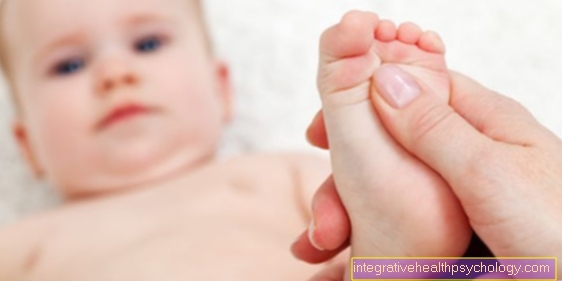
At the earliest
Very courageous and exploratory children tend to learn to walk earlier than other children. They try to explore their world and start with about seven to eight months slowly pulling up on furniture, such as the sofa, in order to be able to stand. As soon as you succeed in doing this you will start the first unsafe steps close. This happens at the earliest eighth month of life around.
On average
On average, babies start taking their first steps between the ages of ten and twelve months. However, these are still very unsafe and they usually still need support. Walking around the sofa, which you can hold on to the entire time, is typical. The brain and the organ of equilibrium must first get used to the new body position so that equilibrium is guaranteed even without holding onto objects. For most children, this process is completed by the eleventh month and they begin to walk short distances without aids.
Please also read our topic on this Development in the baby.
No later than
In general, parents shouldn't worry if their baby is slower to learn to walk than other children. This developmental step differs from child to child in the way and when the child learns to walk. Some children do not start walking until they are 18 months old, which is still completely within the normal range of development. Often times, children who have taken a long time to learn to roll around and crawl do not start walking until later. As long as the child is still making progress, all of this is safe in development. However, if there is a significant delay in other areas compared to other babies, you can talk to the pediatrician about this. In this context, it is also important to know that premature children are generally slower in their development than their peers.
Also read: Development in the toddler
When does a child usually start to stand?
Already from fifth month of life many babies want to make their first attempts to stand. Often they begin to balance and hop on their parents' thighs, held by their parents. This step is very important so that the muscle mass that is necessary for upright walking can slowly develop. To the seventh month of life Babies then start to pull themselves up on furniture that is at their height. In the beginning they often fall relatively quickly, but with this training the brain begins to adjust to the situation and the balance improves. At the end of this development, the children can with approx eight months already safely by the hand of parents. At this stage you should be careful to tip Corners and edges around the baby to cover, as it falls relatively often and could otherwise injure itself.
When can a child walk by the hand on average?
After babies have started pulling themselves up on furniture at around eight to nine months old, walking by the hand is not far away. The first attempts are still a bit shaky, but over time the baby's body adjusts to the new body position. Often babies catch around the tenth month then walking by the parents' hand for the first time. You can first stabilize it with both hands. Over time, they will need less and less help and will usually make their first attempts at walking without aids in the 10th month.
How can I encourage my child to run?
Basically, babies should develop their own motivation to learn to walk. However, there are many ways that parents can help their children along this path support can. For example, you can sit in front of your child and help him stand up and support the first steps by holding hands. Here, the child's running muscles are strengthened and the baby's brain slowly learns to combine the individual components of running. There are also other aids such as running cars or other toys that the babies can hold on to and take their first steps. Many experts now advise against buying a carriage. They make running too easy for the child, which results in delayed development of the leg muscles. Try to give the child incentives to learn to walk. You can build this learning process into games, for example, and reward the child for making an effort.
What can I do if my baby doesn't turn?
Most babies learn between that third and seventh month of life started spinning. This development must first be preceded by a strong development of the back and abdominal muscles, as these are mainly responsible for turning. It is important that the children are given learning incentives.
Try this learning process in that Play to be built in. Most babies turn for the first time when they want to get to a toy because they cannot be reached from their supine position. It is advisable to train the baby as much as possible play in the prone position because the back muscles are strongly trained. Furthermore, they should be your baby Feedback on its performance give. If he has made an effort, reward the child with one smile or try to set a similar incentive again. Soon the baby will enjoy taking advantage of the newfound mobility. Should your child be with you six months still not attempting to turn and showing no interest at all in moving around, a conversation with the becomes Pediatrician devices. Please note that premature babies usually something in their development compared to their peers lag behind.
What is necessary in terms of motor skills if my baby doesn't walk?
Running is an extremely complex process. He puts one correct development and anatomy, the functioning of the Nervous system, the processing of Sensory impressions and the optimal coordination of all these systems. If one of these components fails, severe motor dysfunction can result. However, such developmental disorders or dysfunction of the nervous system are very rare. In most cases, babies also after the 18 month not walking, this is related to minor developmental disorders. A conversation with the pediatrician is strongly recommended.
Examples of serious illnesses are the Infantile cerebral palsy, a disorder in the area of the brain that controls motor functions, or a Spina bifida, also known as the open back. There are also certain hereditary diseases that affect the muscles. These can cause the muscle to malfunction, as in the Duchenne muscular dystrophy the case, or the transmission of nerve impulses to the muscles, which is at Myasthenia gravis is disturbed.
What can I do to keep my child from falling so bad?
Especially when a baby tries to get up or take the first steps, children often fall down because their muscles are not yet adjusted to this new load and they cannot keep their balance. Pointed edges or Increases represent a source of danger for the child in this phase. The simplest measure that can be taken is to use sharp edges or hard surfaces, such as a living room table Rubber corners padding.
As soon as the children can take the first steps without help, they live out their newfound mobility with friends and there is a risk of falling down the stairs. The fall can be prevented by attaching Stair gates be leaned forward at the top of the stairs. These solutions may not look very appealing, but they will protect your child from most serious falls.
It is also important that she is her baby never unattended leave it on heights like the changing table. Especially when babies are learning to turn, they are particularly at risk for such falls.
There is also a soft surface on the floor Play mat or one carpet on which the child can practice walking and will not injure themselves further if they fall. Ideally, there is a rubber slip protection under the carpet. They also offer themselves for the baby Socks with slip protection, so-called ABS socks that prevent slipping on the floor.
When should my child start putting on shoes?
The rule is that you should only buy your baby's first shoes when they can walk safely and are on their feet outside. At home, however, the toddler should still walk barefoot as much as possible. This is important for learning coordination and balance. It is also essential for developing the right sensitivity in the foot. It should also be noted that the shape and size of the feet still develop a lot in small children. This development should not be hindered by being squeezed into shoes. If you still want to buy shoes for indoors, you should use loose, soft slippers that allow you to grow in size.
You can find more information on our website: When should I start putting shoes on my child?






